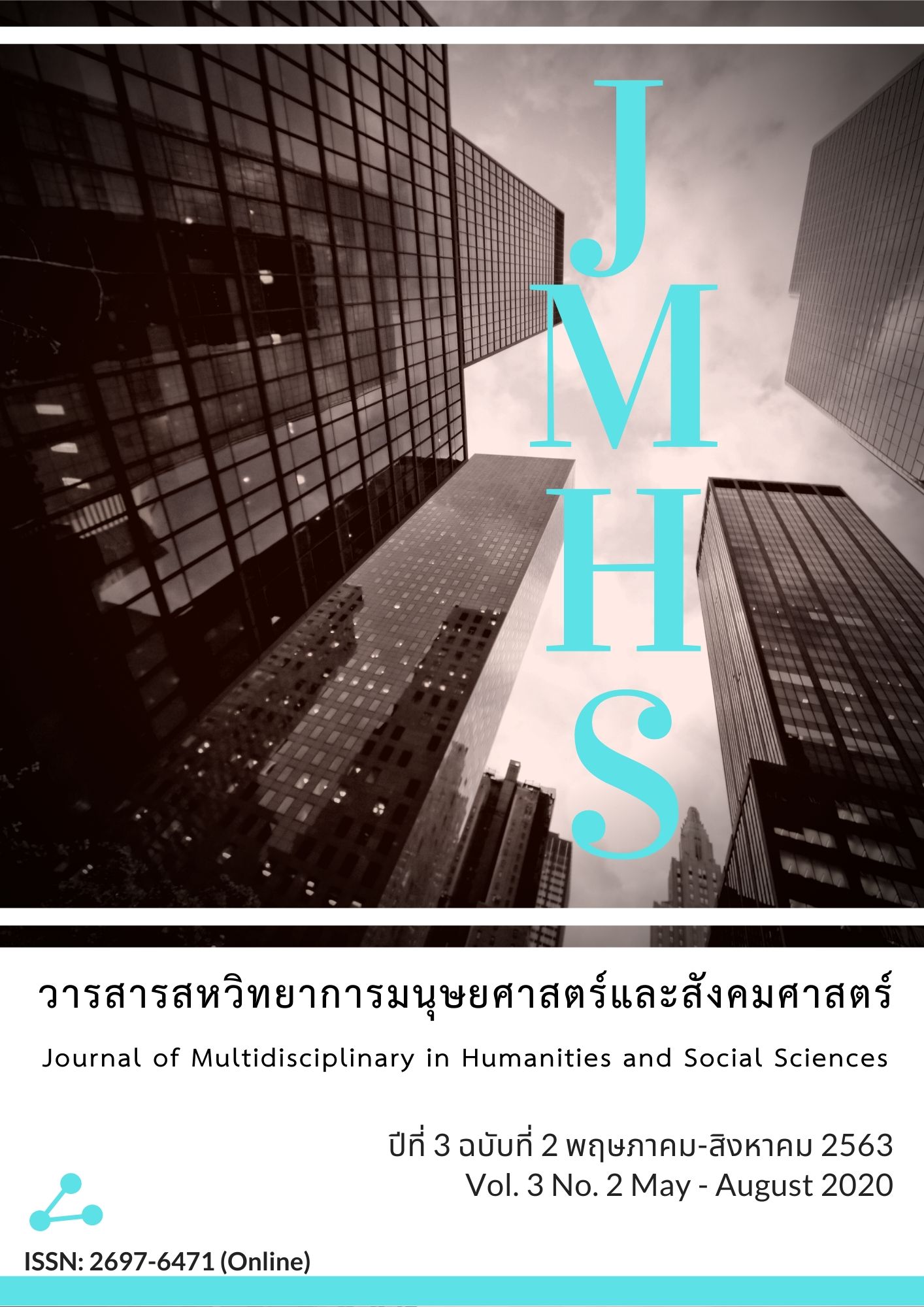Factors Affecting Organizational Commitmant of Personnal A Case Study of Bangkwang Central Prison Nonthaburi Province
Main Article Content
Abstract
This research aimed to 1) study Organization Engagement of personnel at Bangkwang Central Prison Nonthaburi Province. 2) Study Organizational Commitmant of Personnal in Bangkwang Central Prison Nonthaburi Province by personel factor. 3) Study factor affecting Organizational Commitmant of Personnal in Bangkwang Central Prison Nonthaburi Province . Samples were 293 personnel in Bangkwang Central Prison, Nonthaburi Province. The research instrument was a questionnaire. Statistics used to analyze the data were frequency, percentage, mean, standard deviation, t-test, One-Way ANOVA (LSD as a pair comparison) and a Multiple Regression Analysis respectively.
The result revealed that Personnel at Bang kwang Central Prison had a highest level of agreement of overall factors contributing to their organization engagement (= 4.62). To consider in each aspect of factors was found that personnel at Bangkwang Central Prison had a highest level of agreement toward the factor of their work (= 4.63), a high level of agreement toward the organization factor (= 4.37), a highest level of agreement toward the job experience factor (= 4.77) respectively. The results of testing the research hypothesis found that personnel at Bangkwang Central Prison with the different background: gender, age, marital status, the educational background, salary, and job experience significantly had a different level of the organization engagement at 0.05 level. In terms of factors contributing to the Organization Engagement of personnel in Bang Kwang Central Prison, it revealed that factor of job responsibility (X4), the policy(X5) and job guidelines management contribution (X6), and the job characteristics(X8) were significantly affected to the Organization Engagement of personnel in Bangkwang Central Prison, and has a quality of forecast of 60.10 percent. Thai can be written in a forecast equation with a raw score as follows:
Ý = -0.611 +0.789x4 + 0.183x5 - 0.237x6 + 0.426x8
Article Details
Views and opinions appearing in the Journal it is the responsibility of the author of the article, and does not constitute the view and responsibility of the editorial team.
References
กัลยา วานิชย์บัญชา. (2559). การวิเคราะห์สถิติ: สถิติสำหรับการบริหารและการวิจัย. (พิมพ์ครั้งที่ 16). กรุงเทพฯ: โรงพิมพ์จุฬาลงกรณ์มหาวิทยาลัย.
เยาวลักษณ์ ไชยยา. (2555). ความผูกพันต่อองค์การของบุคลากรองค์การบริหารส่วนจังหวัด สกลนคร (วิทยานิพนธ์รัฐประศาสนศาสตรมหาบัณฑิต). มหาวิทยาลัยราชภัฏสกลนคร
วิศิษฐ์ ฤทธิบุญไชย (2554). ปัจจัยที่มีอิทธิพลต่อการยึดมั่นผูกพันทางใจในองค์การของเจ้าหน้าที่กรมราชทัณฑ์. วารสารวิทยาการจัดการ, 28(2), 47-61.
Becker, H.S. (1960). Notes on Concept of Commitment. The American Journal of Sociology, 66(1), 32-40.
Kazlauskaite, Buciuniene, and Turauskas. (2006). Building employee Commitment in the hospitality industry. Journal of Management. (3), pp.302-303
Kazlauskaite, R., Buciuniene, i., Turauskas, L. (2006). Building Employee Commitment in the Hospitality Industry. Baltic Journal of Management, 1(3), 300-314.
Miner, J. B. (1992). Industrial – Organization Psychology. New York : The State University of New York at Buffalo
Porter, L.W., Steers, R.M., Mowday, R.T. and Boulian, P.V. (1982). Organization Commitment, Job Satisfaction and Turnover Among Psychiatic Technicians. Journal of Applied Psychology, 59, 603-609.
Steers, R.M. and Porter, L.W. (1983). Motivation & Work Behavior. New York: McGraw-Hill Book.
Yamane, T. (1973). Statistics: An Introductory Analysis. (3rd ed.). New York: Harper and Row.

